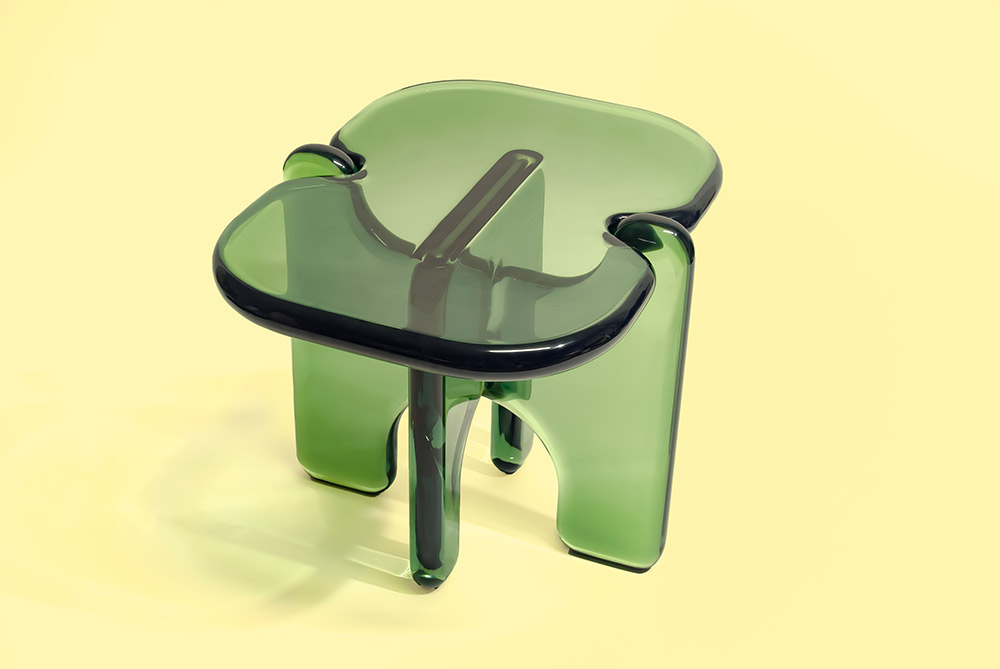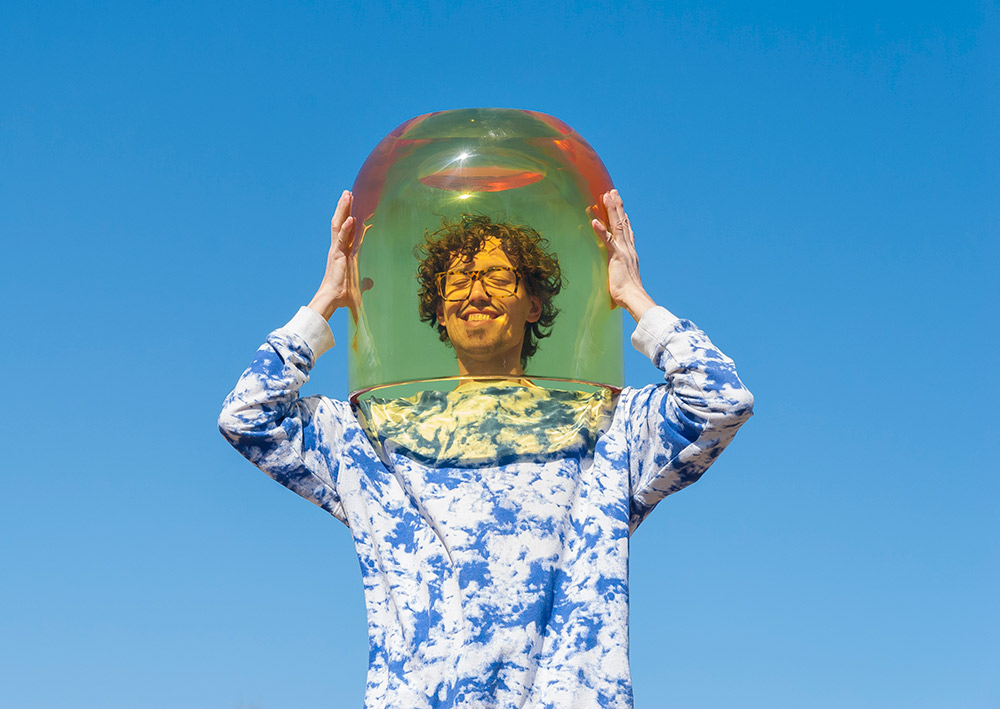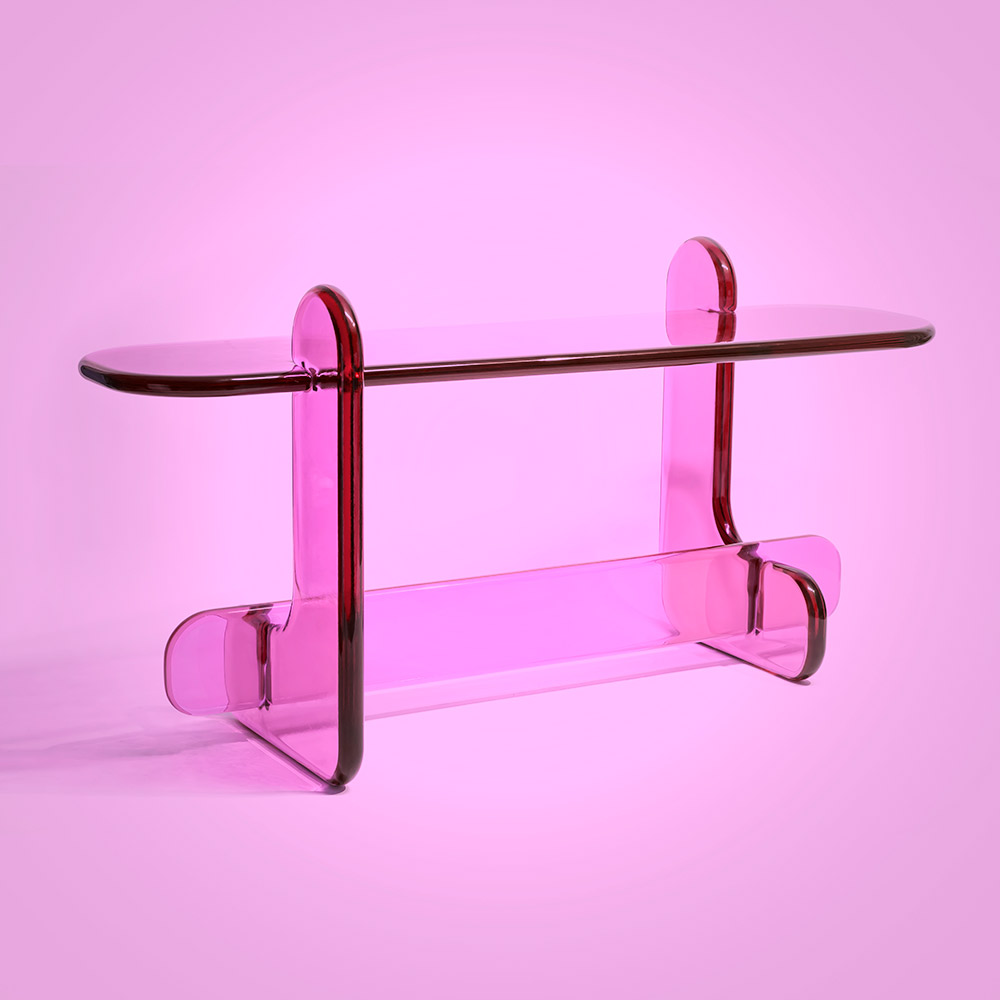Where are the bubbles? That’s usually the first question Chicago-based designer Ian Alistair Cochran gets when fellow makers encounter his sculptural furniture and objects made from solid, vividly hued resin. Resin is a demanding material, one that’s difficult to cast and tricky to cure. Air bubbles become trapped within, seemingly impossible to avoid and marring the final product.
Unless you’re Cochran. His tables, shelves, and stools—rendered in candy and jewel tones, Jeff Koons–like in their playful shapeliness, notched together without adhesives or fasteners—boast perfect clarity. It’s the result of years spent mastering the medium.
“It’s not like pouring water into a cup, where it’s going to be clear and then I’m going to take it out of the cup and it’s going to be clear,” Cochran says. “I’m working from the back to avoid all the headaches that this material has. Then I try to design from there.”

For some designers, those headaches might be reason enough to pursue a different material muse. For Cochran, a deep fascination with materiality is the whole point. It’s what brought him to the Kansas City Art Institute, where he trained as a sculptor after high school.
“I had always liked working physically with things and different materials, manipulating them and dealing with three-dimensionality,” says Cochran, 31. “That kind of carried through my sculpture program.”
After graduating in 2013, Cochran headed to New York, wanting to parlay his sculptural expertise and material interest into something less conceptual, more “functional object-making,” he says. Two experiences turned out to be formative. He started work at Atta Inc., a custom fabrication company that creates objects for architects and designers, where resin turned out to be the primary material. Later, he joined the studio of Fernando Mastrangelo, a furniture and object designer, and worked as Mastrangelo’s fabricator.

In 2018, Mastrangelo was curating the second annual “In Good Company,” his in-studio exhibition for spotlighting young and emerging talent. The theme that year: Material Culture. It seemed like the right launch pad for the clear resin concepts Cochran had been toying with in his own studio; when he showed his boss the ideas, Mastrangelo agreed. Cochran debuted with the first entry into what is now his Plump series—a coffee table composed of five solid pieces of violet resin topped with a piece of curvaceously cut clear acrylic. Surface magazine called it “an impressive foray into furniture.” Sight Unseen named Cochran among 20 American designers to watch.
The Plump collection now comprises console, end, and side tables, along with a mirror, a vanity, a shelf, and trinket trays. (They’re joined by other works, including the curvaceous Echo tables and domed Dew Drop tables-cum-stools, both different from Plump in that they’re solid, rather than formed from interlocking slabs.) With their bulbousness and gemlike colourways, the Plump pieces may look like novelties, but a closer look reveals how Cochran has carefully conceived each element to manipulate effect and perception. The absence of any hardware or glue to join individual components means no interruptions in the clear flow of resin. Light interacts with the colour in different ways depending on the varying levels of thickness, playing with saturation and tone.

“Having so much volume of clear material in a colour that’s catching the light and reflecting and refracting it is itself pretty visually stimulating, without even having to do that much to it,” Cochran says. “I just try to expand on that. There’s no hardware to get in the way of all the visual things going on in there. The pieces interlocking also causes more things that you’re seeing through the material.”
He may have mastered the material, but Cochran isn’t quite done with resin. He’s exploring new ways of working with it, mixing it with other materials to create new textures, new forms, and new perceptions. “That’s what I’ve always been focusing on,” Cochran says, “that sort of visual phenomenon.”
Cochran will be exhibiting at Design Miami 2022 (November 30 to December 4) as part of Tuleste Factory’s Curio booth. iancochran.com; tulestefactory.com
Photos courtesy of Ian Cochran.

